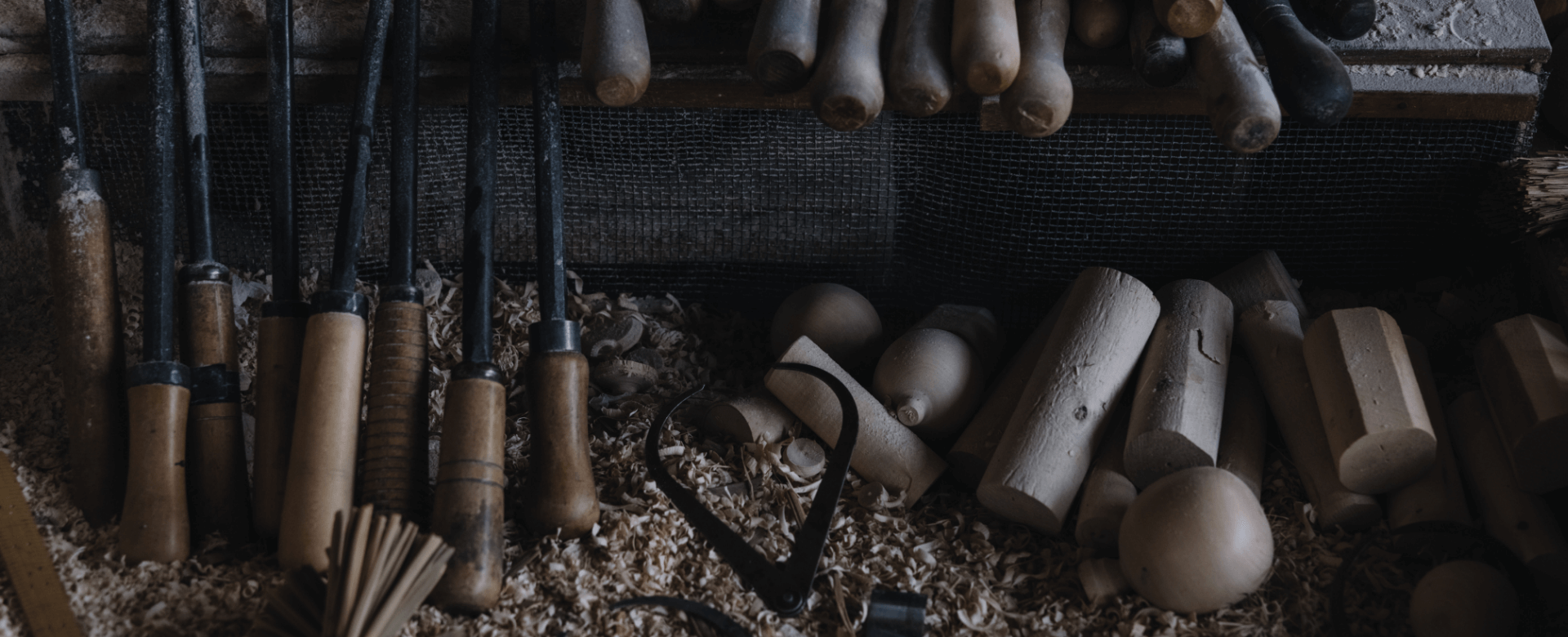
Kokeshi Doll Making
Sakurai-Style Kokeshi Making
The air is cold and clear, and the winter news can be heard at any moment as wood arrives at our workshop in the mountains.
Iwate, Yamagata, and Naruko. The Sakurais' kokeshi dolls are made using wood from the mountains of the Tohoku region.
The process of making a kokeshi begins with confronting the wood in nature while deeply experiencing the changing seasons of Naruko Onsen.
Kokeshi dolls are mainly made from mizuki ("wedding cake tree"), a beautiful, white-skinned wood with plenty of moisture.
Here is a guide on how to make traditional kokeshi dolls using mizuki wood.
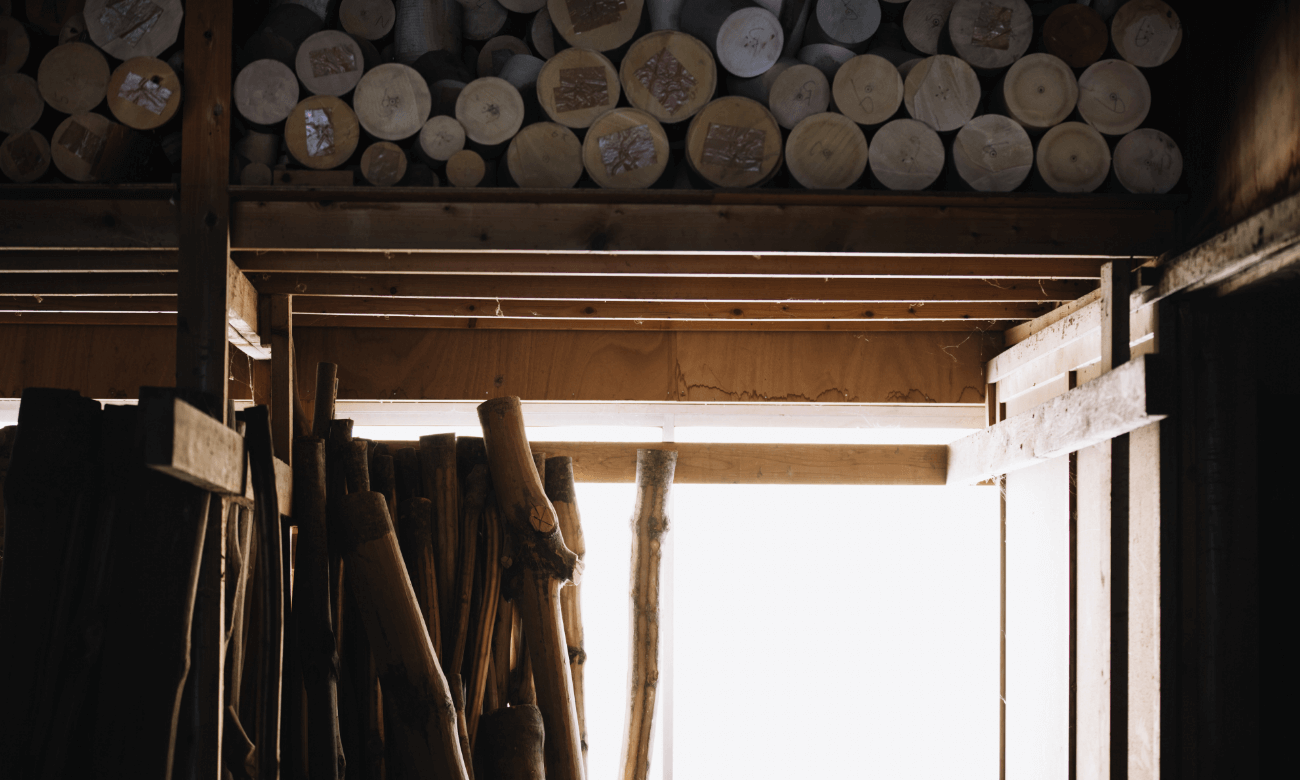
It all starts with facing the wood
When the air is cool, one can almost hear the winter winds, and the wood arrives at the workshop.
The Sakurai family's kokeshi dolls are made using wood from the mountains of the Tohoku region.
Making kokeshi dolls begins with facing the wood amid nature, and feeling the changing colors of the four seasons in Naruko Onsen.
Drying of logs
Autumn
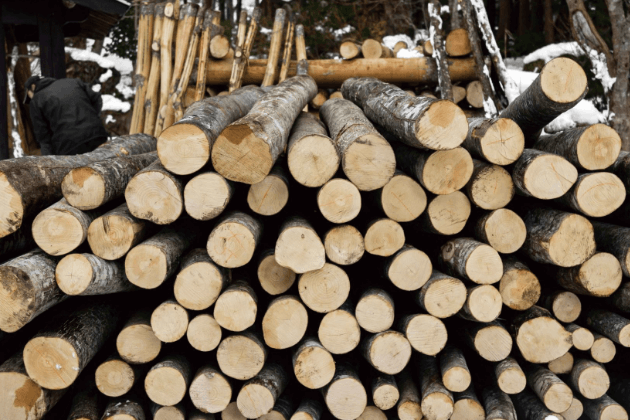
Felling
"Leaf drying"
Trees cut in the fall, when the trees stop growing, are dried on site for a while with their leaves still on. Then the branches are removed and delivered to the workshop before the snow falls. Until the trees arrive, we sharpen the blades of the barking tools and prepare the scaffolding and roof for the drying area.
Winter
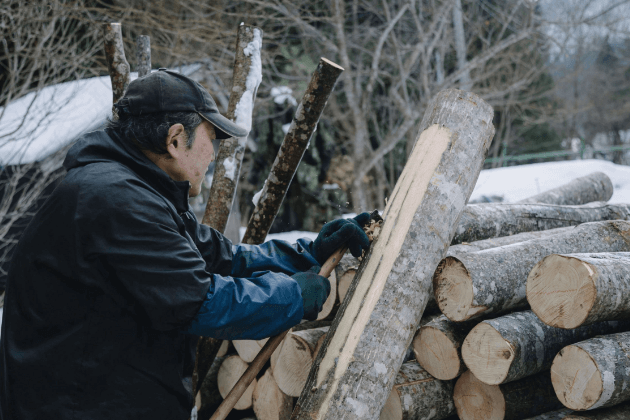
Peeling
Outdoor drying
Once the wood arrives, the bark is peeled by hand, layer by layer, using a tool called a bangagi. The peeled trees are assembled into well-shaped arrangements and roofed over to dry naturally. After the bark is buried under snow, it is dug up. Shoveling snow in winter is also essential to the craftsman's work.
Spring
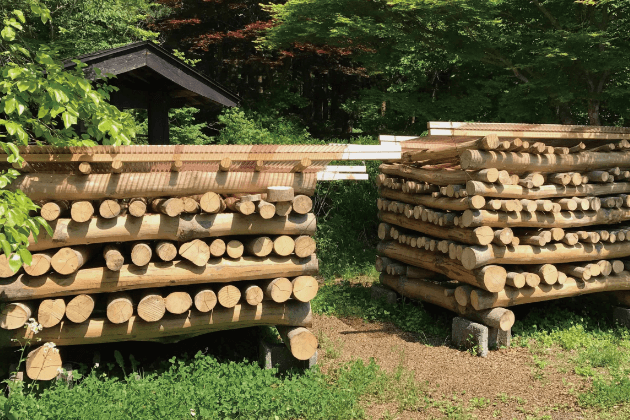
Determining
the degree of
dryness
To prevent the wood from splitting due to sudden changes in temperature, the condition of each piece of timber is assessed individually, and only those that have reached an advanced stage of drying are moved to the drying process in the workshop. As the climate and conditions of the wood change each year, we patiently face the difficulties of natural drying.
Summer
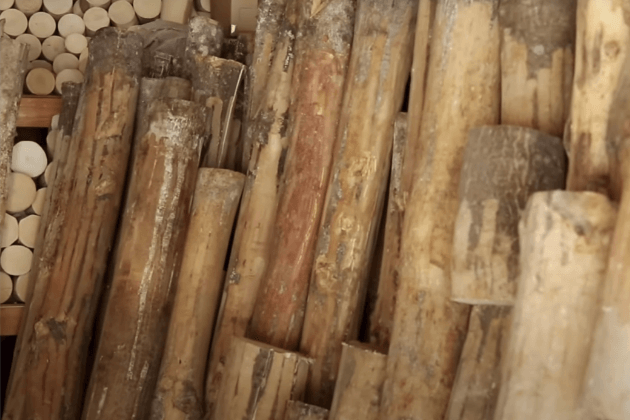
Indoor drying
Sawing
When the area around the workshop is covered with fresh greenery, the wells are dismantled and moved to the workshop to protect the wood from rain and humidity before the rainy season. The wood is sawn to the size of kokeshi dolls and further dried indoors.
Kiji studio
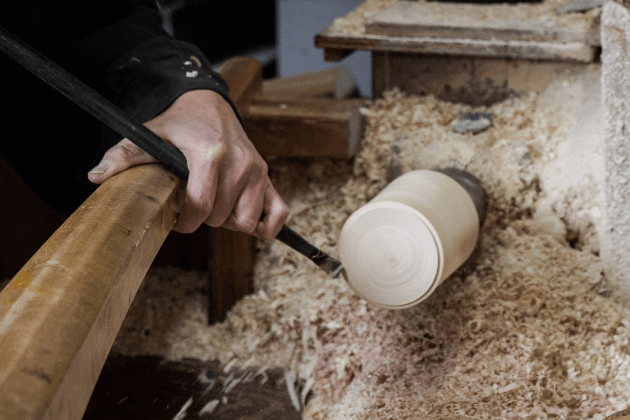
Kiji-biki
("Kiji grinding")
The wood is fixed to the axis of a potter's wheel and rotated to shave it into the shape of a kokeshi doll. All tools are handmade, including a plane for shaving the wood and carving patterns and a thin blade for smoothing out rough edges. The "Hamekomi Shiki," a technique unique to Naruko where the body and head are carved and assembled separately, is also the result of skilled workmanship.
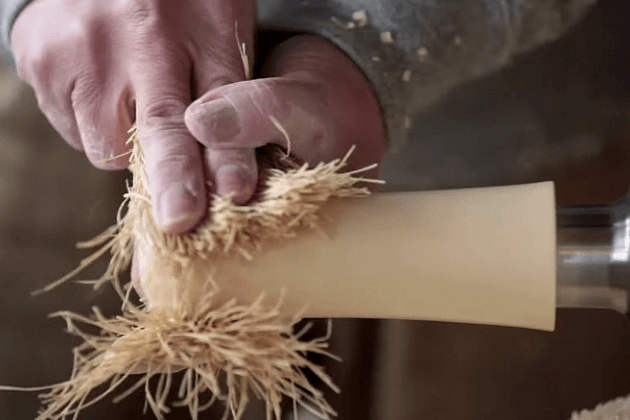
Horsetail and
Rice Grass
Horsetail and rice grass harvested in the fall are bundled together and used as natural files to produce a fine luster. They are grown in our own fields every year.
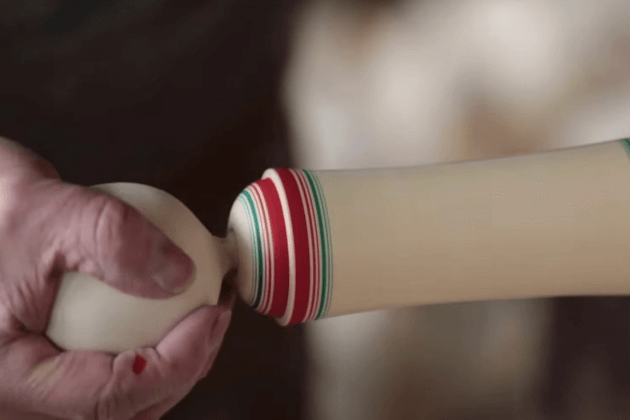
Kubi-ire
("Head Fitting")
The head and body are made separately as the protrusion of the head is shoved into a small hole in the body using the rotation of the potter's wheel. The hamekomi ("inlaid") method is a technique unique to Naruko Kokeshi dolls that takes advantage of the wood's ability to temporarily soften its surface due to frictional heat.
Painting studio
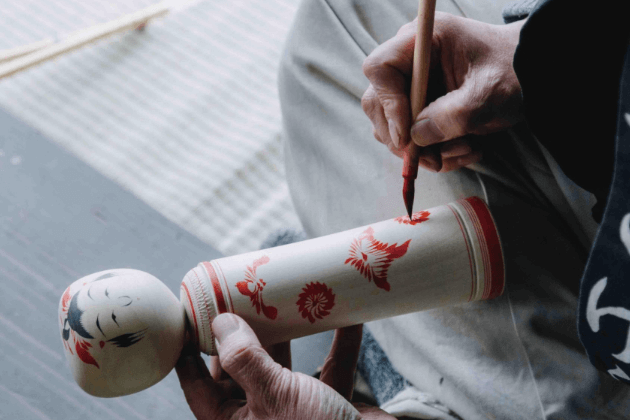
Paintings and
Colors
Kokeshi dolls are brought to life through the use of fine brush strokes. The face resembling a child's face, the mizuhiki hand on the head symbolizing celebration, and the chrysanthemum pattern on the body are characteristics of traditional Naruko kokeshi. Each kokeshi is painted by hand, giving it a unique appearance.
Kiji studio
Complete
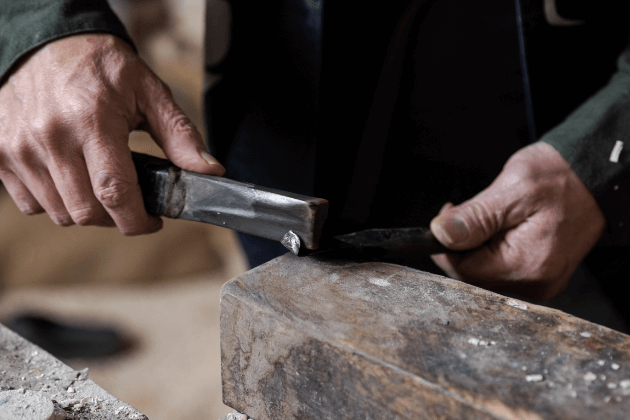
Complete
Finally, the kokeshi is returned to the workshop once more and finished with wax from the Japanese wax tree or beeswax to give it a glossy finish.
To make and convey better kokeshi dolls

Tool Making
The Sakurai family has a tradition from the previous generation that tools must be beautiful and clean. They make all of their own tools, such as the kana-bo (plane stick) and thin-blade knives, and also do the forging work. They also make the tools used to polish kokeshi dolls by binding together plants called tokusa and inagusa, and they cultivate the plants used as materials for these tools. The Sakurai family's passion for kokeshi doll making is also contained in their tools.
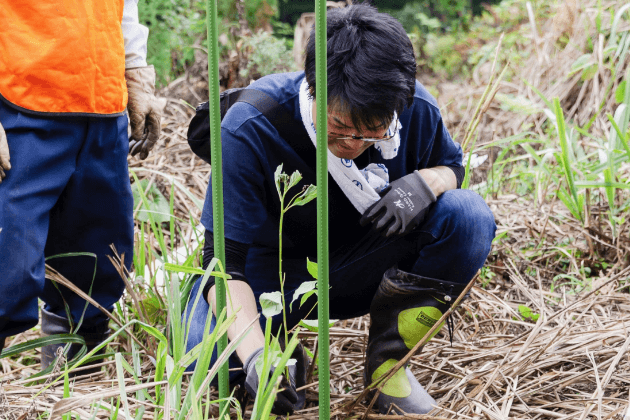
Mizuki Tree Planting
We plant mizuki trees used for making kokeshi dolls. While mizuki trees had been planted by the predecessor Shoji Sakurai with his friends for the next generation, these tree-planting activities had ceased due to the aging of the craftsmen and the lack of successors. In 2019, we proudly resumed, carrying on the tradition. Through efforts to protect and regenerate the forest, we will connect this culture to the future.

